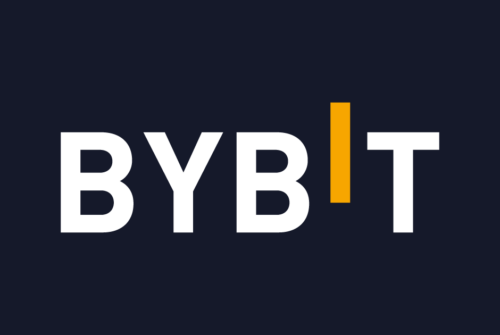
Ether (ETH) has seen a 36% year-to-date increase in its price in 2023 in U.S. dollar terms. This recovery, however, is modest given that ETH is currently trading 66% below its November 2021 peak of $4,870.
Ethereum vs. Bitcoin: 14-month downtrend and counting
Moreover, on Sept. 20, Ether reached its lowest levels against Bitcoin (BTC) in 14 months, breaching the critical 0.06 BTC support. This has raised questions among Ether investors about the factors behind this price decline and what it will take to reverse the trend.

ETH buyers placed their biggest hopes on protocol upgrades that significantly reduced the need for new coin issuance when the network transitioned to a proof-of-stake consensus mechanism.
These hopes were realized in mid-September 2022, resulting in an annualized issuance rate of just 0.25% of the supply. This transformation aligned with the Ethereum community’s vision of “ultrasound money.”
Furthermore, the subsequent Shapella upgrade on April 12 allowed for withdrawals from the native staking protocol, addressing a major concern for investors. Previously, both the 32 ETH deposits and the yield from participating in the network consensus were locked up indefinitely.
Confidence among Ethereum enthusiasts grew as these significant hurdles were crossed with minimal issues. They anticipated that the price of Ether would surpass $2,000, a prediction that came true on April 14.
However, this optimism was short-lived, as ETH’s price promptly fell back to the same $1,850 level just a week later.
Notably, instead of witnessing a net withdrawal, Ethereum staking experienced a net inflow of 3.1 million ETH in the 30 days following the Shappela upgrade, surpassing even the most optimistic expectations.
Given that the Ethereum network’s planned developments have generally been on track, albeit with the customary delays, investors now need to explore other potential catalysts for reversing the current downtrend in Ether’s price relative to BTC.
External factors present important triggers for ETH price
One of these potential catalysts lies in the ongoing legal battle between Ripple (formerly Ripple Labs) and the U.S. Securities and Exchange Commission, which could significantly impact Ether’s price momentum.
The SEC contends that XRP (XRP) sales to retail investors constitute a securities offering. However, in July, Judge Analisa Torres ruled that XRP generally does not qualify as a security under SEC guidelines, especially when distributed through exchanges.
As noted by the “American lawyer and Bitcoiner” Bryan Jacoutot on X (formerly Twitter), the Ethereum Foundation remains exposed due to the presale of ETH directed toward institutional investors and subject to a lock-up period.
(1/12) ANALYSIS: I’ve reviewed the district court ruling on XRP and it rests on very shaky ground. Expect an appeal.
AND Ethereum Foundation remains at risk even if its upheld because of important distinctions in the methods used by Ripple to sell the “pre-mine”
🧵 ⬇️⬇️
— Bryan Jacoutot (@BryanJacoutot) July 13, 2023
According to Jacoutot, even if Ripple were to secure a favorable outcome, it wouldn’t immediately mitigate the risks for Ethereum. Nevertheless, it’s undeniable that the regulatory uncertainty surrounding the Ether initial coin offering (ICO) remains a source of concern for investors.
On Sept. 20, an Ethereum address associated with the ICO era showed its first activity, transferring 32.1 ETH (valued at $52,000 at the time) directly to Coinbase. This additional movement only amplified regulatory concerns since there are no apparent incentives for addresses that have remained dormant for four to eight years to divest at this particular point in the market cycle.
An Ethereum ICO participant who has been dormant for 8 years transferred 32.1 $ETH to #Coinbase just now.
The address received 200 $ETH at Ethereum Genesis.
And the address appears to be related to shemnon.eth (@shemnon).https://t.co/nj5eF8iRT0 pic.twitter.com/6Viytn4dU5
— Lookonchain (@lookonchain) September 20, 2023
A similar occurrence unfolded with an address linked to Vitalik Buterin, which sent 300 ETH (worth $490,000 at the time) to the Kraken exchange on Sept. 19.
More positive news gives hope to Ethereum investors
On the news side, Ethereum has seen some positive surprises, such as the unexpected request for a spot Ether exchange-traded fund by ARK Invest and 21Shares on Sept. 6. This development reduced the risks associated with excessive institutional concentration in Bitcoin, particularly if the ETF is approved.
Additionally, Canto, a layer-1 Cosmos-native blockchain, announced its expansion to Ethereum’s layer 2 on Sept. 18. This zero-knowledge, permissionless rollup, compatible with the Ethereum Virtual Machine, is primarily focused on bringing traditional finance into the Ethereum ecosystem.
Should Bitcoin’s price surge be driven solely by the approval of a spot Bitcoin ETF or inflation concerns in the United States, Ether is well-positioned to follow suit, benefiting from the same catalysts.
Meanwhile, Ethereum’s primary competitors in the decentralized applications sector, namely Solana and BNB Chain, face similar risks pertaining to ICO and securities regulations, making it unlikely for them to challenge Ethereum’s dominance in terms of total value locked and trading volumes.





